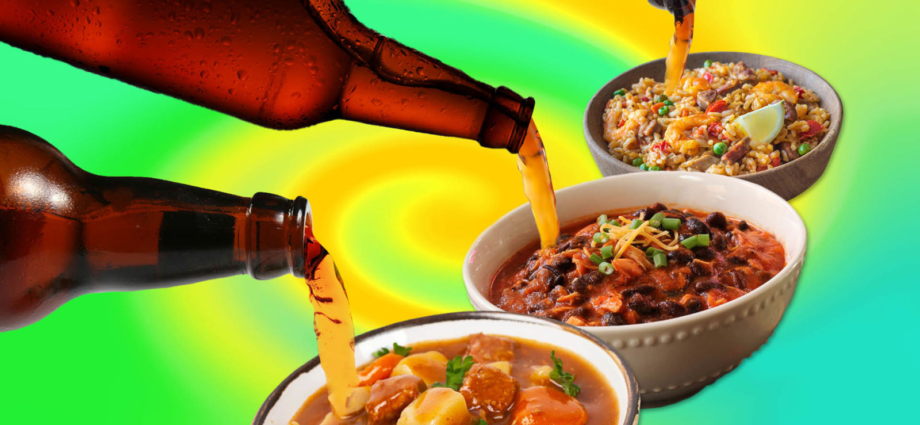While pairing beer with specific foods falls midway between an art and a science, there’s far less effort involved with cooking with beer as an ingredient. I’ve both cooked and baked with beer, and while the latter requires precision and forethought—it is baking, after all—the former is mercifully simple. Keep one key rule in mind, and you’ll hardly ever be led astray.
That one rule, which I’ll call my Unified Theory Of Cooking With Beer (trademark pending), will serve you well in 95% of your cooking-with-beer experiments:
If the beer is brown or amber in color, not too hoppy, and tasty enough for you to drink, you can cook with it.
Now let’s examine this rule piece by piece. Brown- and amber-colored beers get their hue from the specialized malts used in brewing them. Those malts are kilned or roasted to a higher degree than paler malts, and they derive their color from that heating and drying process. Think of malted grains like you’d think of toast: The darker the color, the more intense the roasted, toasted, caramelized, or event burnt flavors. Generally, brown- and amber-colored beers will deliver the kind of biscuity, nutty, toffee, and milk chocolate Maillard flavors we like in savory dishes while not yet veering into burnt, scorched, or charred territory.
But some brown- and amber-colored beers are also quite hoppy, which is what brings us to the second portion of the Unified Theory Of Cooking With Beer. Hops can taste good in food—there are hop oil pizzas, and I like hops in a tangy salad vinaigrette—but they’re generally a lot more difficult to cook with than malts are. That’s because hops contain alpha acids that add bitterness—to say nothing of the actual flavor of hops themselves, which can range from citrusy and fruity to piney and resinous. Add a glug of IPA to your sauce and you might wonder why it suddenly tastes like Pine-Sol. Stick with malt-focused beers, and you’ll avoid the bitter-pine trap.
Lastly, just as chefs will tell you not to cook with wine you couldn’t stand to drink, don’t try to cook with beer that’s skunky, stale, or just doesn’t taste good to you. A beer that’s not your favorite but still tastes pleasant overall is fine to cook with, as is a beer that you left in your fridge just a couple weeks too long. But if you’re tasting undesirable flavors, don’t put that in your food—just the way you wouldn’t cook with rancid butter or old milk.
Keep those three simple components in mind, and you’ll choose the right beer for the vast majority of your cooking applications. As for what dish to use it in, the possibilities are vast. Stews and chilis can benefit from the roasted malts of a darker beer, while deglazing a pan of roasting meats with an amber ale will lend some biscuit and caramel richness. In many cases, you won’t even need to measure the beer out—give the dish a small splash, taste, and add from there. Then invite me over for dinner, please.

